

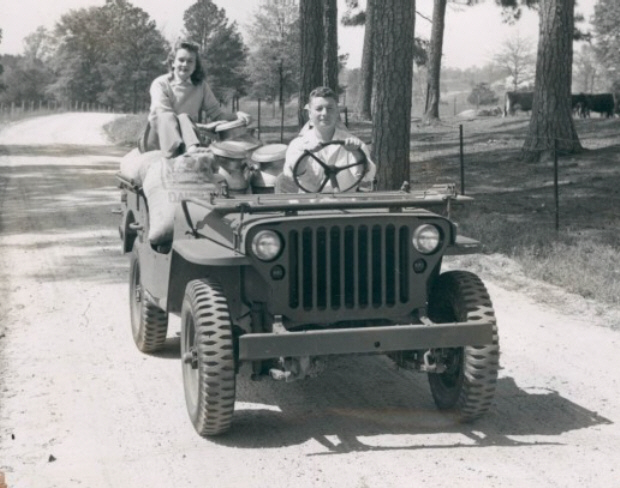 |
 |
| Auburn Jeep After Testing in 1942 | Auburn Jeep Today |
1942 "Auburn" MB - Earliest Known Surviving Civilian Test Jeep
This jeep is the earliest known documented "civilian" jeep. While there are drawings commissioned by I.B. Hazelton showing potential postwar uses for the jeep in the fall of 1941 and a photo of Willys-Overland president J.W. Frazer in a MA with a private 1942 Ohio license plate, this was a specially factory prepared MB whose purpose was to be a test vehicle for a series of agricultural tests outside the factory. In April 1942, the USDA's Farm Tillage Machinery Laboratory located at Auburn, Alabama sponsored a test to see if the jeep could be used as a light tractor to perform various tasks around the farm. The Army supplied a Ford GPW for the test and Willys-Overland sent a specially prepared MB along with 2 of their test drivers (Don Kenower and Cy Martin). The Auburn MB is this specially prepared MB. While the total story of what happened after the tests is still being researched, it was left behind by Willys-Overland probably for further testing in Auburn and it surfaced again in Georgia in the late 1970's. At the present time, even though its serial number is in the range of the early slat grilles (late February 1942), it has an incorrect slat grille. The slat grille was changed at the time of the Auburn tests since the stamped grille was now standard at the time of the tests. The original grille that was on the jeep during the tests will be re-installed soon. Other non-original parts will also be replaced.
![]() Engine
Found! - Leon Heynders in Australia has found a engine that would be
appropriate for this jeep! It is engine number MB-125092.
Engine
Found! - Leon Heynders in Australia has found a engine that would be
appropriate for this jeep! It is engine number MB-125092.
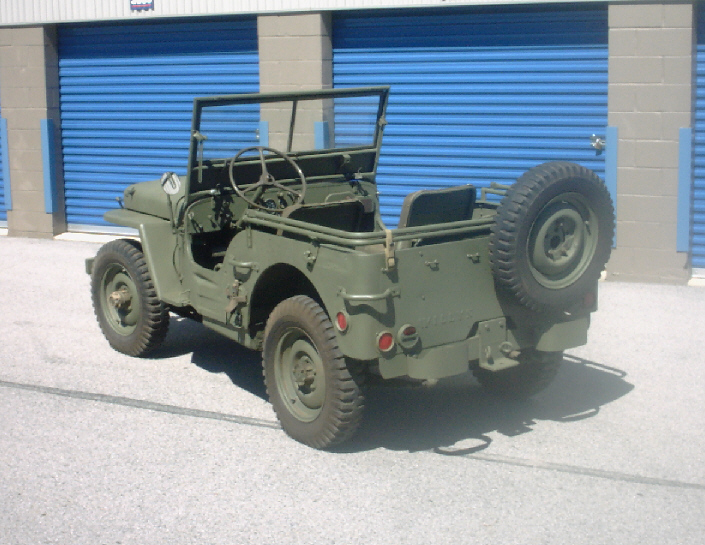



|
One of the interesting modifications is a cutout in the front floor to gain access to the rear of the transfer case. The patch is definitely factory made to fit around the transmission area and has provisions for the gas tank strap. The bottom of the patch has no evidence of the wide reinforcement hat channel that runs though that area so it isn't a cut out of a regular MB floor.
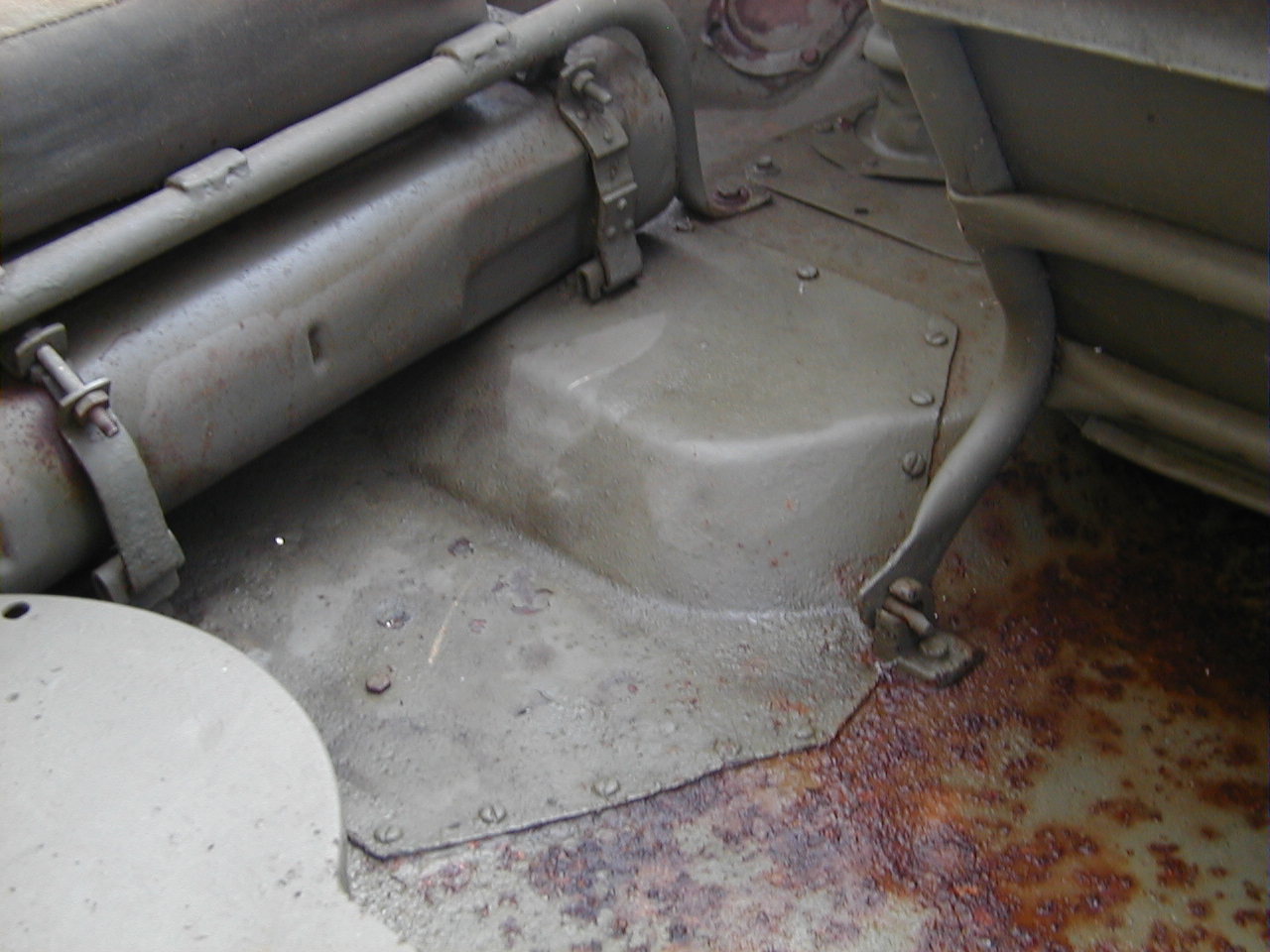
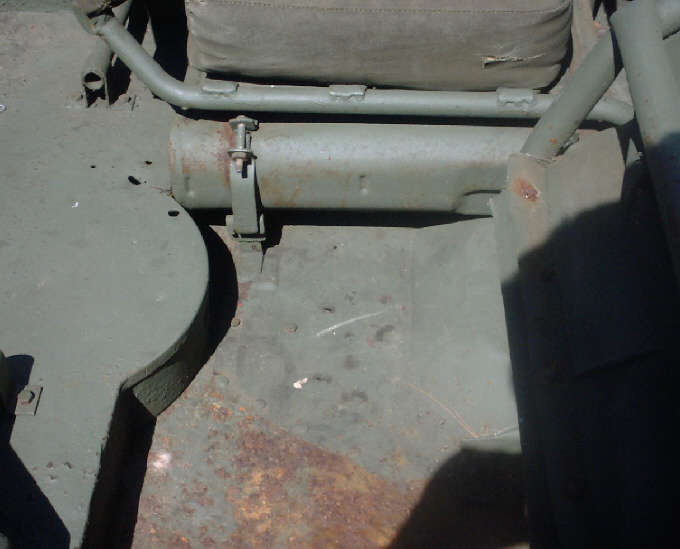
|
The tests were well covered in the period press of the time. The USDA issued a press release entitled “First of Post-War Salvage Tests Shows Jeep Could be Used on Farm,” May 27, 1942 that first informed the public of the tests. The magazine Country Gentleman ran a 2 page article on the tests in their June 1942 issue. Popular Science also ran a 2 page article in January 1943.
Country Gentleman - June 1942Farm Tillage Laboratory Soil Bins
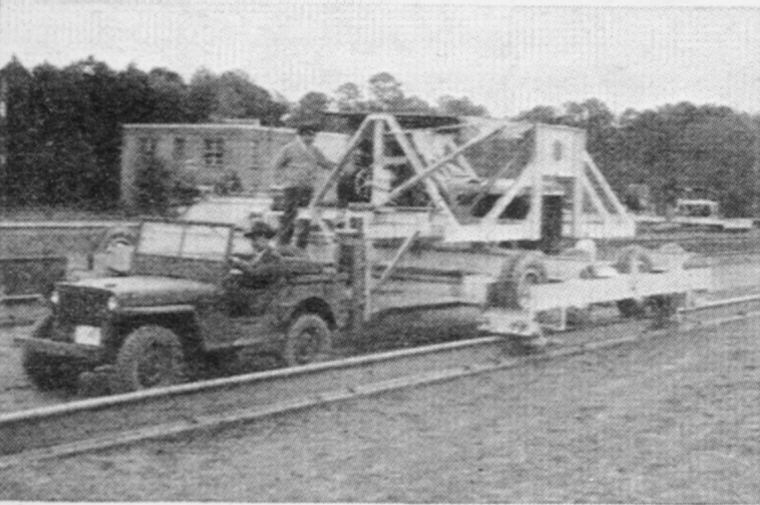 |
| Auburn Jeep being tested on power pulls on the dynamometer at the Farm Tillage Laboratory Soil Bins in April 1942. |
In the Popular Science article, they show the Auburn MB (with its Ohio dealer tag), pulling a dynamometer to measure the ability of the jeep to pull a weight without slippage. The jeep is pulling one of the vehicles ("cars" they call them) that is running on the rails (I-beams) that separate adjacent soil bins .In this test, it was able to do that at 1300 lbs. The soil bins still exist and are being used at the laboratory (now known as the USDA-ARS National Soil Dynamics Laboratory). Below are more recent photos of the soil bins.
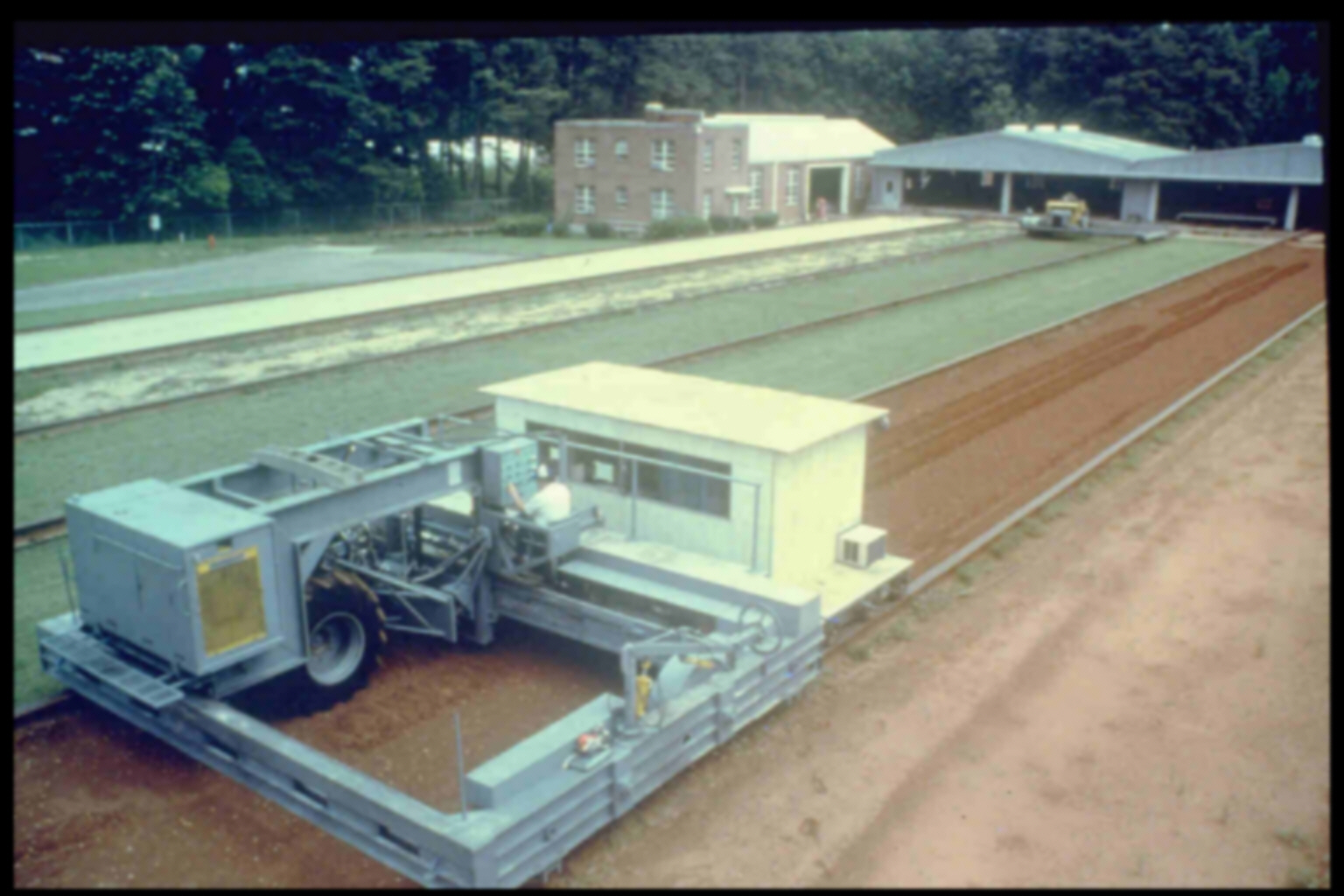 |
| The soils bins in late 1970's in a similar area the Popular Mechanics took the picture of the Auburn Jeep. This is a photo of the "Traction Research Vehicle" (TRV) in The TRV is used for research on traction and soil compaction of agricultural tractor tires. |
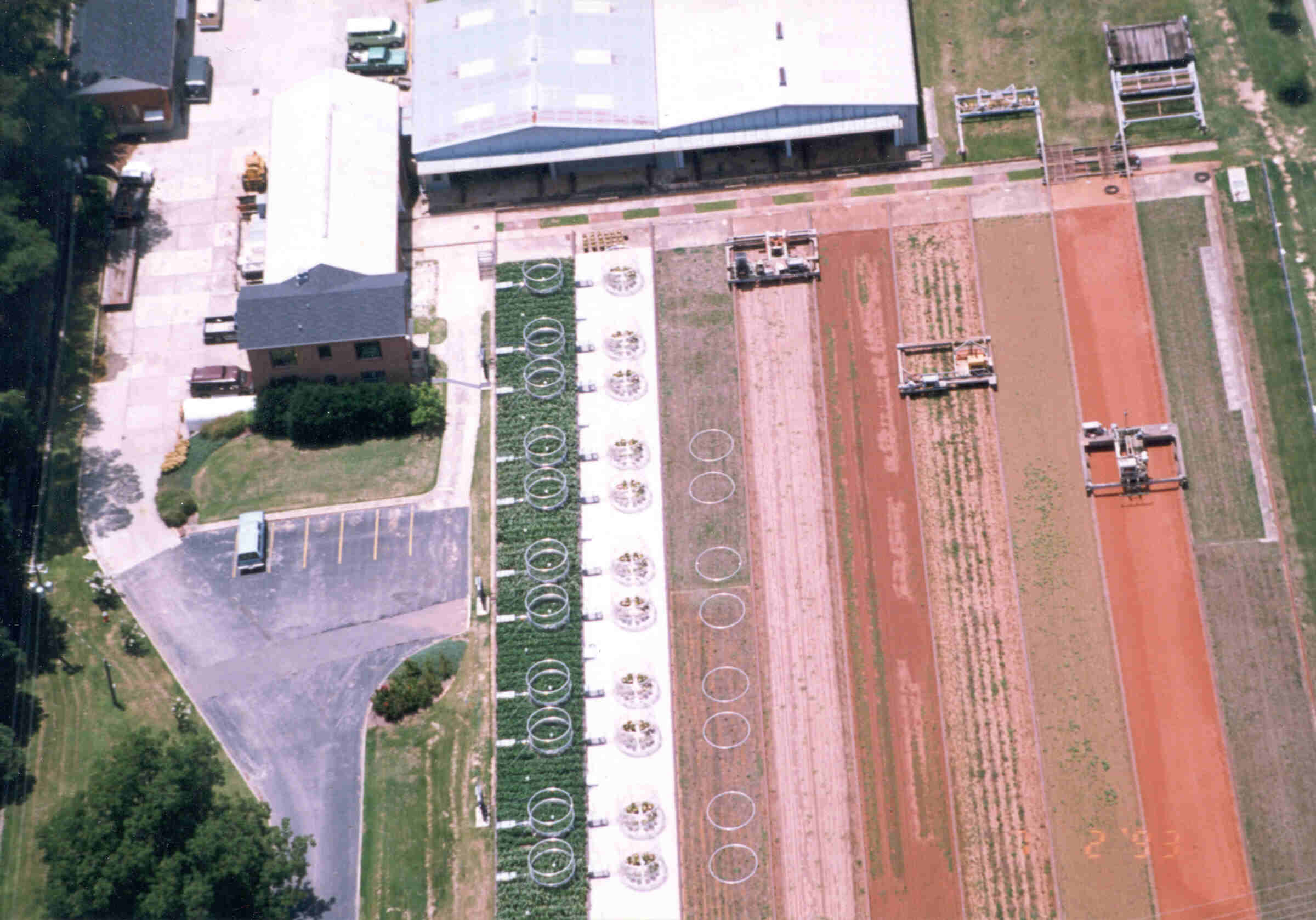 |
| A 1993 aerial view of the Soil Bins. |
 |
| A picture of the Ford GPW that accompanied the Auburn MB. This photo shows the custom hitch that the USDA fabricated for the testing. It is very similar to what would end up on the later CJ-2 Agrijeep prototypes and the production CJ-2As. Missing are the 2 center straps and the reinforcing straps that went from the back of the draw bar to the intermediate rear cross member. Instead of the reinforcing straps, there appear to be 2 threaded rods that hook on the axle itself. |
Interesting remnants of column shift mechanism on the steering column:
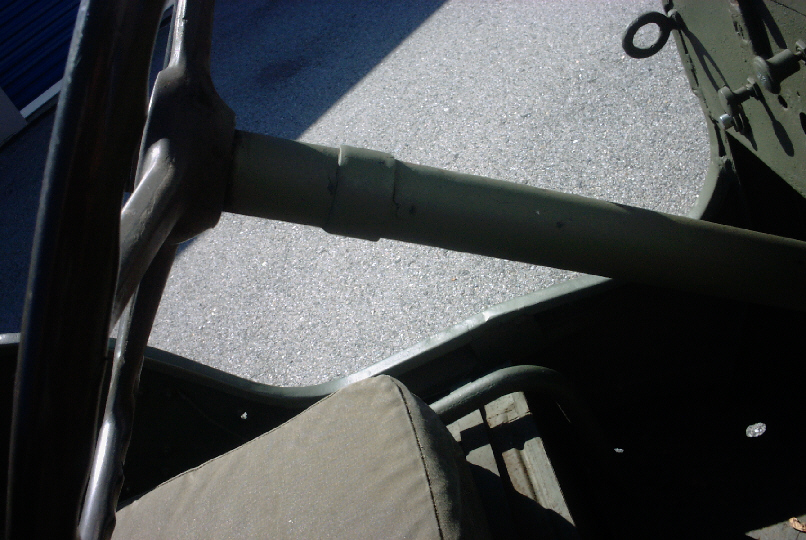
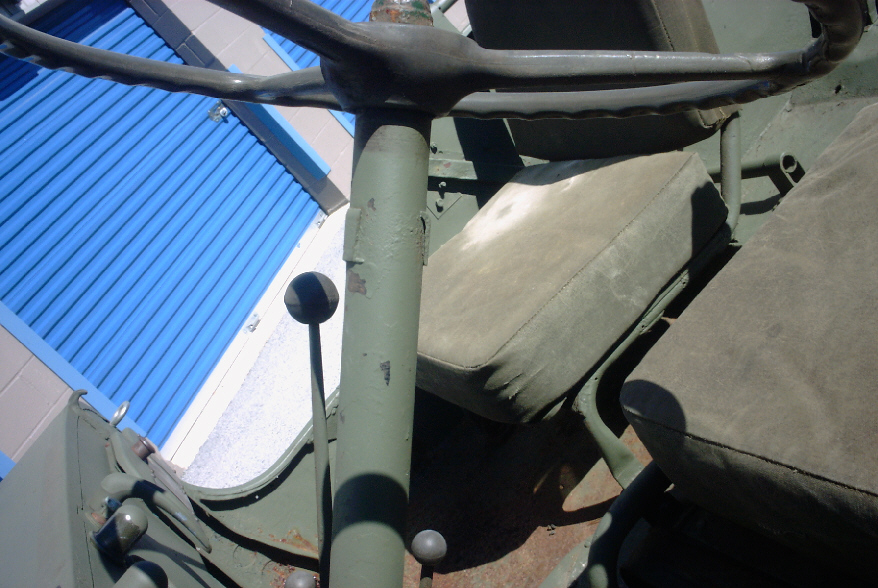
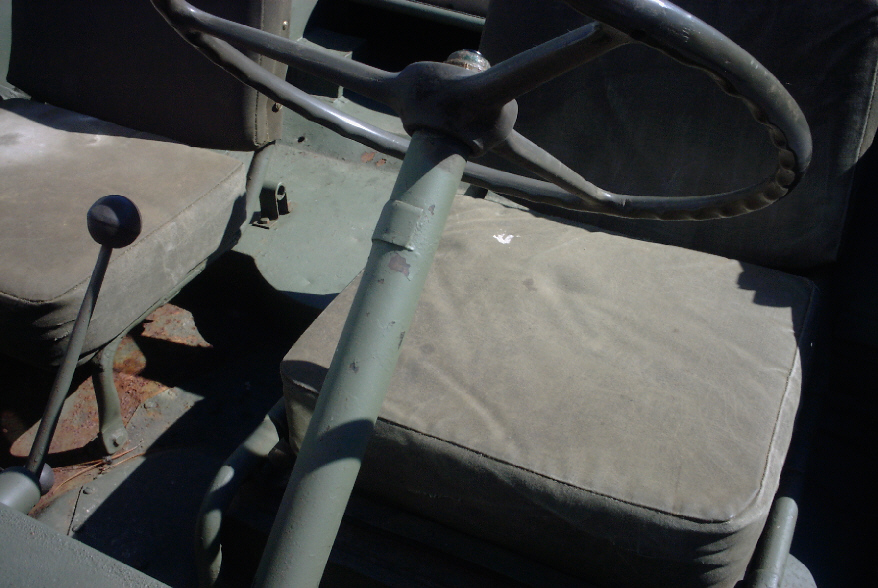
|